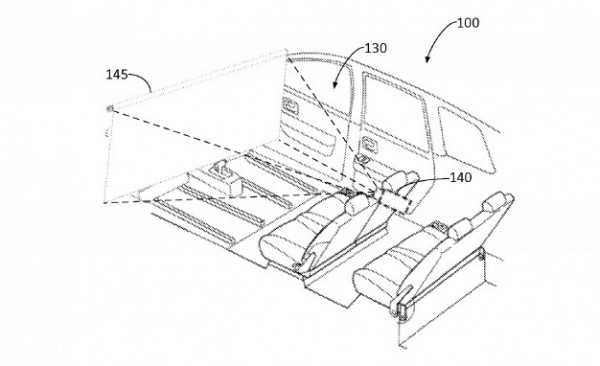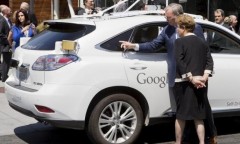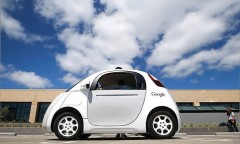By Steve Pak, | March 08, 2016

Ford Self-Driving Car Entertainment System
Ford's new patent is for an entertainment system for self-driving cars that would allow passengers to watch videos. The new autonomous vehicle (AV) product would use a projector system including a screen when the automobile is in driverless mode. It would give people riding in robotic cars something to do besides chatting with friends, playing mobile games, and checking their text or voice messages.
Like Us on Facebook
The patent was recently published by the United States Patent Office. It is for a large drop-down projector screen of an "Autonomous Vehicle Entertainment System," according to Car and Driver.
Ford's patent includes illustrations that show a concept that is similar to a drive-in movie theater, but is instead designed for in-car video watching.
The screen rolls down from the top of the windshield and a ceiling-mounted video projector displays the images. Patent documents state that the entertainment system could have various forms including dashboard or rearview mirror displays.
Ford's patent explains that the entertainment system would shut off or shift media to passenger displays in front seatbacks or ceiling when the auto switches out of self-driving mode and the driver takes control of the vehicle.
It is unclear if Ford would use the patent to build a product. It might use standard flat-panel displays instead of game-changing technology.
In addition, there could be some safety issues. For example, the driver would be unmindful about possible road hazards such as public buses, according to Engadget.
Other companies have also been experimenting with in-car entertainment concepts. Volvo has focused on video-streaming mobile data links to Faraday Future's concept car unveiled at this year's Consumer Electronics Show (CES).
In other Ford AV news, the company announced at the Detroit Auto Show in January that it was testing self-driving cars in the snow. Many experts considered conditions such as rain, snow, and hail to be one of the last big problems to solve before robot cars hit the retail market.
Ford reported that traditional AV sensors like LiDAR are unable to see through snow, which prevents them from building high-resolution digital maps of the auto's surroundings that are important for providing a safe experience for passengers.
Here are some Tesla self-driving features:
-
Use of Coronavirus Pandemic Drones Raises Privacy Concerns: Drones Spread Fear, Local Officials Say

-
Coronavirus Hampers The Delivery Of Lockheed Martin F-35 Stealth Fighters For 2020

-
Instagram Speeds Up Plans to Add Account Memorialization Feature Due to COVID-19 Deaths

-
NASA: Perseverance Plans to Bring 'Mars Rock' to Earth in 2031

-
600 Dead And 3,000 In The Hospital as Iranians Believed Drinking High-Concentrations of Alcohol Can Cure The Coronavirus

-
600 Dead And 3,000 In The Hospital as Iranians Believed Drinking High-Concentrations of Alcohol Can Cure The Coronavirus

-
COVID-19: Doctors, Nurses Use Virtual Reality to Learn New Skills in Treating Coronavirus Patients











